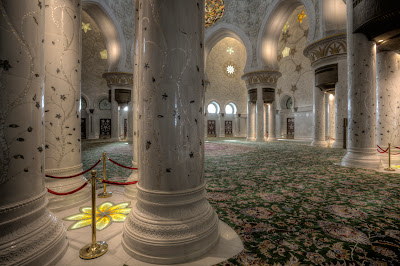I call it the JIGSAW panorama technique - it's not strictly a jigsaw but the net result can be quite impressive. This is the kasbah at Ait Ben Haddu in-sub saharan Morrocco. It's an impressive place and has been used in several blockbuster films, like Jewel on the Nile and Gladiator, among others.
Problem is it's very BIG. Answer, set the camera to shoot in medium or low resolution (that's not a typo) then zoom in. Probably to 50mm, or more.
Then, once zoomed in, shoot sections of the main subject as you would a regular panorama - but double, or triple deck the panorama sections so you get two, three, or more 'layers' composed of 5 or more individual sections each. Reason for shooting low resolution is so the computer can handle the stitching process. This example is made from 21 sections. Shooting at 18Mp creates a file that's 1.5Gb+ - it took more than 20 mins to finish on my laptop. Choose a lower resolution and you still end up with a big 200Mb final file.
- Use Photomerge in Photoshop Elements 8/9 or CS 4/5 to stitch the segments
- Shoot from left to right, or vice versa. Photomerge will identify what fits with what.
- Flatten and then crop if needed.
- If there are edges/areas missing you can choose to clone the bits back in or leave them to give a 'missing piece' effect...


















































